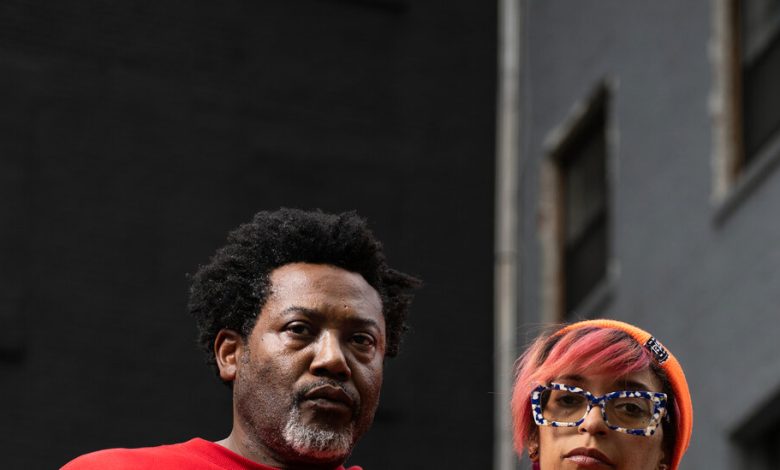They Thought They’d Found the Perfect New York Loft. It Was Illegal.

The painter found out about the Bronx building for creative types on Craigslist. So did the fashion stylist and the air quality technician who calls himself “a wannabe artist.”
The six-story building of 30 roomy lofts offered the kind of space a creative might find in a trendy building in Manhattan’s SoHo or TriBeCa at a fraction of the rents with two-bedrooms going for $2,000 a month.
But tenants said they got an unexpected bonus when they moved in: a community. Together, they built a fire pit and a grill in the shared courtyard where they talked shop and shared inspiration. They held cookouts, certain to have veggie burgers on hand for the vegan tenants. Some of the tenants even befriended the landlord, Yizhak Kohen.
And then in a swift turn of events, everything changed, setting up a classic tenant-landlord fight with multiple lawsuits, accusations of retaliation and harassment and a twist.
Mr. Kohen told tenants earlier this year that he planned to sell the building. At the same time, some tenants began calling 311 to complain that Mr. Kohen and his family were opening up vacant apartments as short-term rentals and crowding them with multiple guests. By May, building inspectors began showing up to investigate, hitting Mr. Kohen with one violation after the other. Then there was no gas, and the tenants could not use their stoves and had no hot water. By mid-August, the fire department had ordered the tenants to vacate and placed a padlock on the door.
The building at 220 East 134th Street, it turns out, is an illegal conversion. Originally built for commercial use, the building was never zoned nor properly renovated to accommodate residential living — lawbreaking that Mr. Kohen described as an unspoken, open secret.“We tried to stay low-key. I knew what we were doing over there was illegal,” Mr. Kohen, 53, said in a brief phone interview.
But some tenants say they did not know they were living in an illegal building. Several have now banded together to form a residents’ association and have applied to get the building officially declared a legal loft, under the city’s loft law.
Many tenants say they suspect that Mr. Kohen wanted to sell the building, so he began creating unlivable conditions. Others say it’s just the cycle of New York City real estate — the Bronx has succumbed to the market, and gentrification has finally reached a last corner of affordability, swallowing up their building.
A 2009 rezoning freed up Mott Haven for a residential development boom. The area, formerly populated by car repair shops and storage facilities, sprouted shiny high-rises like Brookfield Properties’ Bankside and Chess Builders’ The Arches in the years since. The Motto,a 23-story rental development in Mott Haven, is currently under construction around the corner from Mr. Kohen’s building.
“The South Bronx is the last frontier for New York real estate speculation to make a lot of money,” said Johnny Rivera, a board member at the East Harlem/El Barrio Community Land Trust, a community preservation group across the river. “The pressure is on all landlords to sell for profit, at all costs.”
Asked if he planned to sell, Mr. Kohen said, “Maybe eventually.”
‘Vibrancy and Energy’
The Bronx once had an abundance of artist lofts like those in 220 East 134th Street, said Viviana Bianchi, executive director at the Bronx Council on the Arts. Today, it’s one of a handful of such buildings remaining.
Mr. Kohen, who owned a local moving company in the 1990s and has houses in the Bronx and Florida, said he intended to use the storage building for his moving company business but converted the units into loft apartments about 20 years ago. Building records show that almost immediately, the building department began receiving complaints of an illegal conversion.

Several tenants banded together in a resident’s association. They’re applying for legal residence under the city’s loft law.Credit…Michelle V. Agins/The New York Times
Tenants said the ads they saw about the building did not say it was illegal. In a listing online as late as October 2020, a two-bedroom was described as “gorgeous, lofty” and “in one of the last warehouses remaining.”
“One of the neatest apartments of its kind, this unit is NOT to be missed,” the listing read.
Such ads attracted people like Paul Fearon, who said he spotted the building on Craigslist about 15 years ago.
Mr. Fearon, a British immigrant, jumped at the chance to grab the fifth-floor artist loft for $2,000 a month. A self-described “wannabe artist,” Mr. Fearon laughed as he explained that he only performed air sampling for environmental control companies.
About six years in, his girlfriend Ebonie Cannon moved in with him, leaving her apartment in Midtown Manhattan. Ms. Cannon, a fashion designer and holistic wellness practitioner who had moved to New York from Chicago, worried that the South Bronx wouldn’t be ideal for her.
But the neighborhood surprised her. “This place had life and vibrancy and energy that I didn’t experience in Manhattan or Brooklyn,” she said.
The apartment fit their growing needs: Ms. Cannon and Mr. Fearonhave two children, now ages 8 and 2.
And they built a family with the other tenants in the building with the courtyard cookouts and shared interests.
Olivia Jakubik, a fashion stylist from Poland, moved into the building in 2020. Her live-in boyfriend is a photographer, she said.
Geoffrey Rawling, the painter, moved there in May 2021. The neighborhood became his canvas. He hung samples of his mixed media surrealist art on the gray walls of the hallway leading to his apartment.
Though some tenants said Mr. Kohen rarely communicated outside of collecting rent payments, Ms. Cannon and Mr. Fearon considered him a close friend too.
‘Absolutely Humiliating’
Then came the chaos of short-term rentals, inspections and what tenants say was a forced eviction.
With no gas and eventually no electricity, Ms. Cannon, Mr. Fearon and their children took cold showers, ran a generator on their fire escape and cooked in a microwave.
Unable to get in touch with Mr. Kohen, the tenants called the police, who found that the electrical meter was missing. Building inspectors found a disconnected sprinkler system, poorly maintained fire escapes and other violations.
“We found severe life-safety concerns that were posing an immediate hazard to the building occupants,” said Andrew Rudansky, press secretary at the Department of Buildings. “This landlord’s apparent disregard of their legal responsibility to ensure a safe and legal home for the occupants is reprehensible.”
The tenants were ordered to leave, and Ms. Cannon and Mr. Fearon and their children moved into a shelter: a one-bedroom apartment provided by the city’s Department of Social Services in nearby Longwood. The family sleeps on two twin-size beds. There’s no Wi-Fi, and the shelter has a curfew. “It is absolutely humiliating,” Ms. Cannon said.
At least “my children can have hot baths and actual meals here,” she said.
Mr. Fearon filed a complaint with Bronx County Court in July, and a judge ordered Five-Boro Storage Inc., of which Mr. Kohen’s former wife Orit Yaron is listed as the chief executive, to restore services to the building. The services still have not been restored.
Separately, Mr. Rawling, Ms. Jakubik and four other tenants are suing Five-Boro in civil court for harassment.
Five-Boro Storage also has outstanding penalties due for 16 violations, each carrying $50,000 fines.
In an interview, Mr. Kohen, who goes by Isaac, said he once shared an emotional connection with some of his tenants. “We were family for over 20 years and overnight it was like, ‘Isaac, you’re gone,’” he said.
‘Beware’
The tenants hope that all their efforts will force the building to be reopened.
Enacted in 1982, the city’s loft law provides a path for commercial units to be legally converted into code-compliant residences. Applications are filed with the loft board, which has the final say. The process is similar to a lawsuit, involving evidence and hearings within the city’s Office of Administrative Trials and Hearings.
Several residents say they are ready to move back in. In August, the fire department allowed former residents to enter and collect belongings. Mr. Rawling illuminated the way with one of the flashlights that the tenants kept in the hallways during the power outage like a shared emergency amenity.
Inside his space, the overhead bulbs weren’t necessary anyway. “Look at this lighting. This is why I love this apartment,” Mr. Rawling said of the natural sunlight flooding the space.
Like other tenants, he has little sympathy for Mr. Kohen.
Words are now painted on the outside of the building: “Beware of Landlord.”



